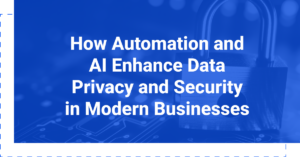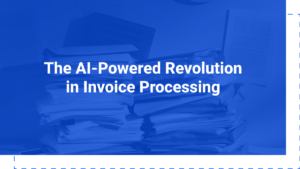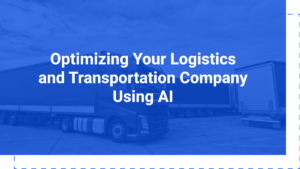Planning Your Automation Strategy for 2024 and Beyond

- Product
- • March 22, 2024
- • 4 min read
Share:
Table of Contents
Let’s stay in touch
Subscribe for more content handpicked just for you.
As businesses transition from 2023 to 2024, the growing role of AI and automation in everyday processes is impossible to ignore. Where the technology had previously been reserved for high-tech industries, now almost every B2B and D2C company is employing some version of the practice, almost universally to the benefit of both the business and their customers.
In the wake of a new business year, understanding and maximizing your use of AI and automation should be high on your list of internal business priorities. As data shows both in adoption and performance, we have firmly entered the “age of intelligence” – any organization that doesn’t invest appropriately and tactically will likely be left behind.
The Role of Automation in Business is Growing

AI in business isn’t just becoming more ubiquitous across organizations. Even more, companies already employing a version of automation seek to more deeply involve technology in their everyday work — at least at the enterprise level. Research from IBM shows that 42% of companies with 1,000 or more employees actively use AI in some form in their business processes and planning, while 59% intend to increase and accelerate investment in AI in the coming year. Meanwhile, businesses are similarly investing heavily in automation tools like RPA, with a Gartner report showing investment topping $3 billion a year.
Though enterprise organizations have the capacity and capital to invest in new technology, smaller and mid-sized companies are also making a concerted effort to keep up and activate AI. A mid-market technology report from Deloitte found that 30% of these businesses are already piloting automation and AI solutions, and another 35% actively using new applications — with industries like telecommunications and healthcare overindexing.
Collectively, the business landscape is clamoring for automation integration, regardless of their size. The only question for your own company is how fast and readily you can adopt the technology in a way that’s useful for your business goals.
How Automation is Improving Employee Performance
More technology for modernization’s sake is not a real solution — but the foreseen and active benefits of automation are improving standards and outcomes across industries. A report co-authored by Salesforce and the Harvard Business Review shows vastly improved worker productivity and employee satisfaction. The survey amongst automation-powered business employees revealed over 90% saw increased productivity, 89% felt more satisfied in their work, and a further 85% noticed better inter-team collaboration.
These results speak to the core of AI and automation’s benefits — empowering the individual employee to accomplish far more in their work than before while stripping away the issues of repetitive and menial tasks that block them from tackling more complex issues.
How Businesses Need to Adjust to the AI and Automation Era

AI will be the tool of choice for document- and information-heavy industries in the coming decades. These four sectors in particular need to understand the value and application of AI and automation in their processes and start implementing solutions accordingly.
Healthcare
In an industry that is both inundated with data and also increasingly cognizant of patient information security, healthcare organizations see enormous benefits from automation. With the right solutions, companies can consolidate, access, and act upon patient information from consolidated sources — using intelligent processing to pull data from forms, medical records, and lab results.
In essence, the acceleration of information gathering and review helps doctors and healthcare workers collaborate better and deliver more accurate patient outcomes.
Insurance
The precise nature of insurance, particularly unemployment insurance for businesses, demands that all data is accurate and transparent to make sure payments to insurers and insurees are correct. Thanks to automation, organizations that use or depend on unemployment insurance can scan and process claims much faster, paying out benefits much faster and avoiding fraud and overpayment at every turn.
Logistics and Transportation
Ensuring proper logistics in an increasingly diversifying supply chain is becoming more complex every day. Thankfully, automation applications help simplify some of the most routine challenges brought on by repetition and human error. By interpreting and consolidating data from massive amounts of shipping records and requests, automation streamlines an organization’s ability to review and track shipments for all stakeholders.
As a result, any TMS or ERP equipped with automation massively improves its ability to ensure the safe and timely delivery of goods by giving comprehensive oversight to the movement of data.
Finance and Banking
From large institutions down to the finance departments at everyday organizations, managing invoice processing is a time-consuming and detail-heavy endeavor. But with automation in your corner, organizations can use intelligent data capture to identify and extract necessary data rapidly from scores of documents — reducing workload for finance teams and minimizing error in processing and payment of invoices.
By protecting the integrity of financial information and ensuring accurate payment, organizations can reduce instances of fraud, missed payments, and other costly mistakes.
Unlocking the Future of Automation in Your Business

Interested in building your own automation strategy for your business in 2024? Reach out to Plextera today to try a demo of our transformative software for businesses of all sizes and industries.


